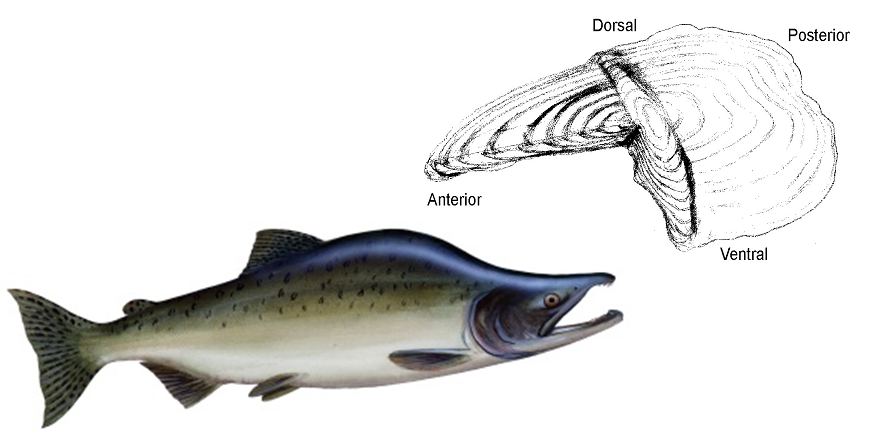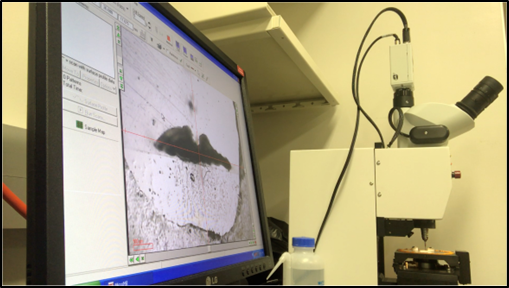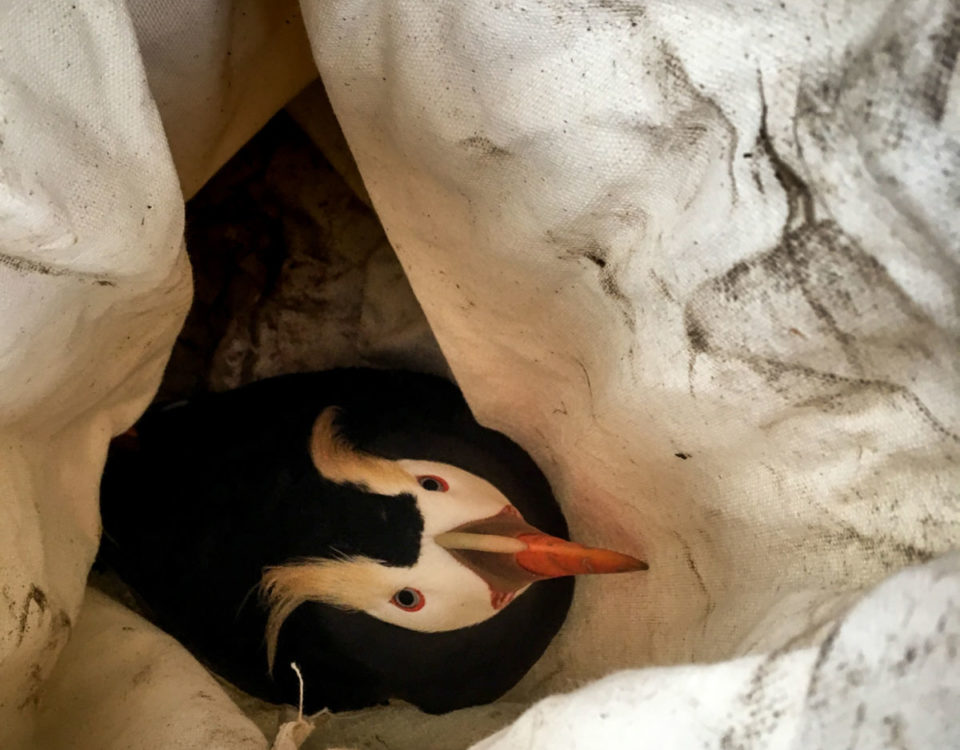Using otolith geochemistry to understand the watershed origins of Arctic salmon

Using otolith geochemistry to understand the watershed origins of Arctic salmon
Kristen Gorman1, Tim Linley2, Pete Rand3, and Todd Sformo4,5
Otoliths are mineralized structures of the inner ear among teleost fish, primarily consisting of calcium carbonate. These structures grow sequentially, and are not reabsorbed, over the lifetime of a fish and therefore show predictable patterns providing information on age and annual growth much like a tree ring (Figure 1). The chemical composition of an otolith reflects that of a fish’s environment. For example, when young anadromous salmon are developing in freshwater streams, the region of their otoliths that grow during this time period incorporate the chemical composition of the water that reflects the underlying geology, temperature, and even food. Thus, geochemical signatures of otoliths such as the isotope ratios of strontium (87Sr/86Sr), oxygen (18O/16O), and carbon (13C/12C), and elemental concentrations can be measured over the lifetime of a fish providing a window into its environmental history.

Researchers are now using these geochemical techniques (Figure 2) to better understand the watershed origins of expanding pink salmon (Oncorhynchus gorbuscha) populations in the Alaskan Arctic. The Arctic is a rapidly changing region with record increases in air and water temperatures, and associated reductions in sea ice that will have important implications for the coastal and pelagic ecosystems of the Arctic. Responses by Pacific salmon to these unprecedented changes are of particular interest given the ecological, economic, and cultural importance of salmon in many regions of Alaska. Available information on catches of salmon in Alaskan Arctic coastal habitats suggest that numbers are increasing as part of population expansions. However, is it unknown if Arctic watersheds can sustain and locally produce salmon. Our research is evaluating similarities (and dissimilarities) between the otolith geochemical signatures during juvenile freshwater residency of adult pink salmon that returned to the Alaskan Arctic to spawn with that of water samples collected from these regional Arctic watersheds. We are comparing our results with those from established pink salmon populations that spawn in the Prince William Sound region of southcentral Alaska. Our study is a first of its kind for Arctic salmon to better understand the processes of northern range expansions by pink salmon.


1University of Alaska Fairbanks, College of Fisheries and Ocean Sciences, Fairbanks, Alaska 99709. 2Pacific Northwest National Laboratory, Richland, Washington 99352. 3Prince William Sound Science Center, Cordova, Alaska 99574. 4Department of Wildlife Management, North Slope Borough, Utqiaġvik, Alaska 99723. 5University of Alaska Fairbanks, Institute of Arctic Biology, Fairbanks, Alaska 99709.




